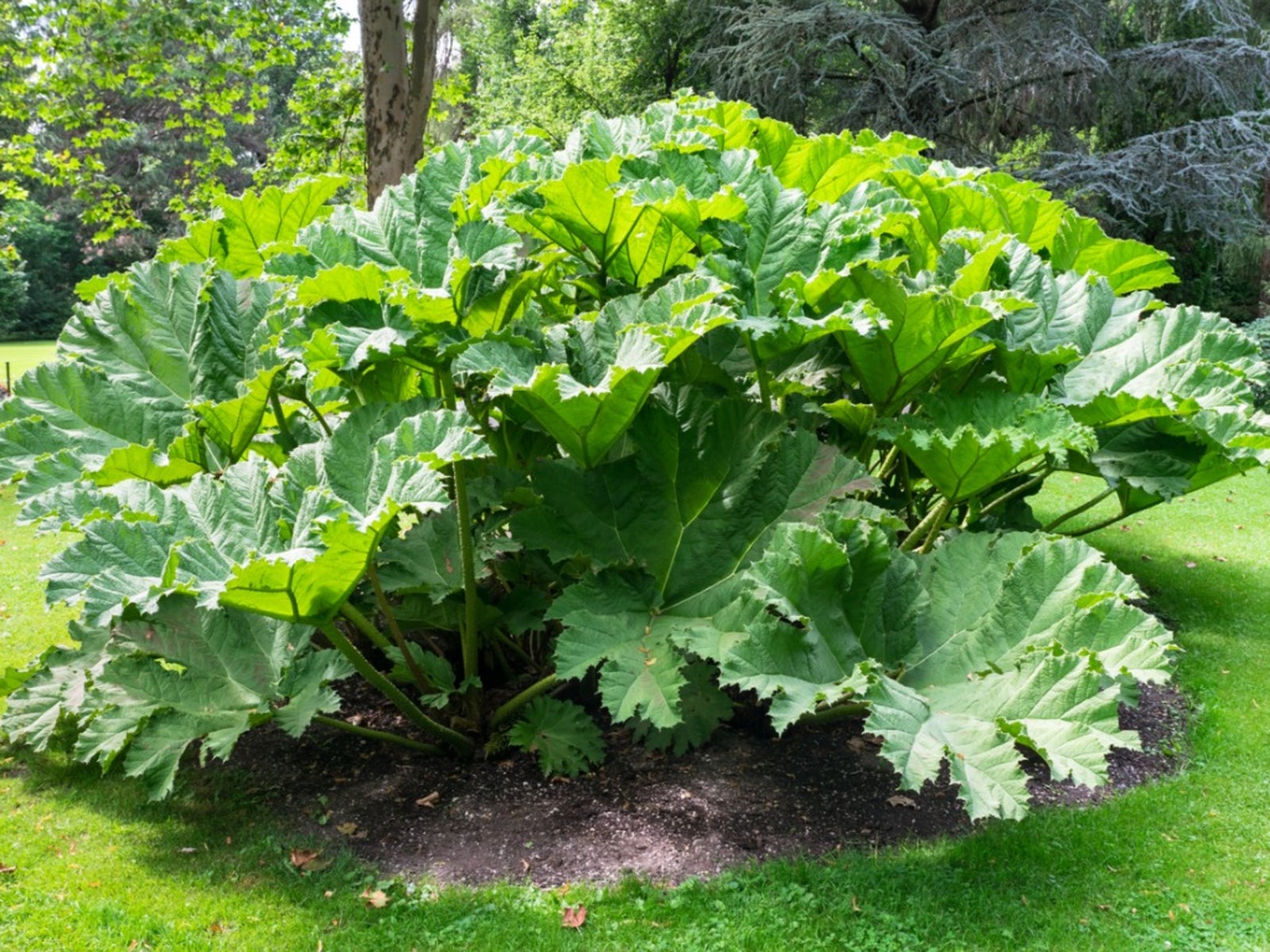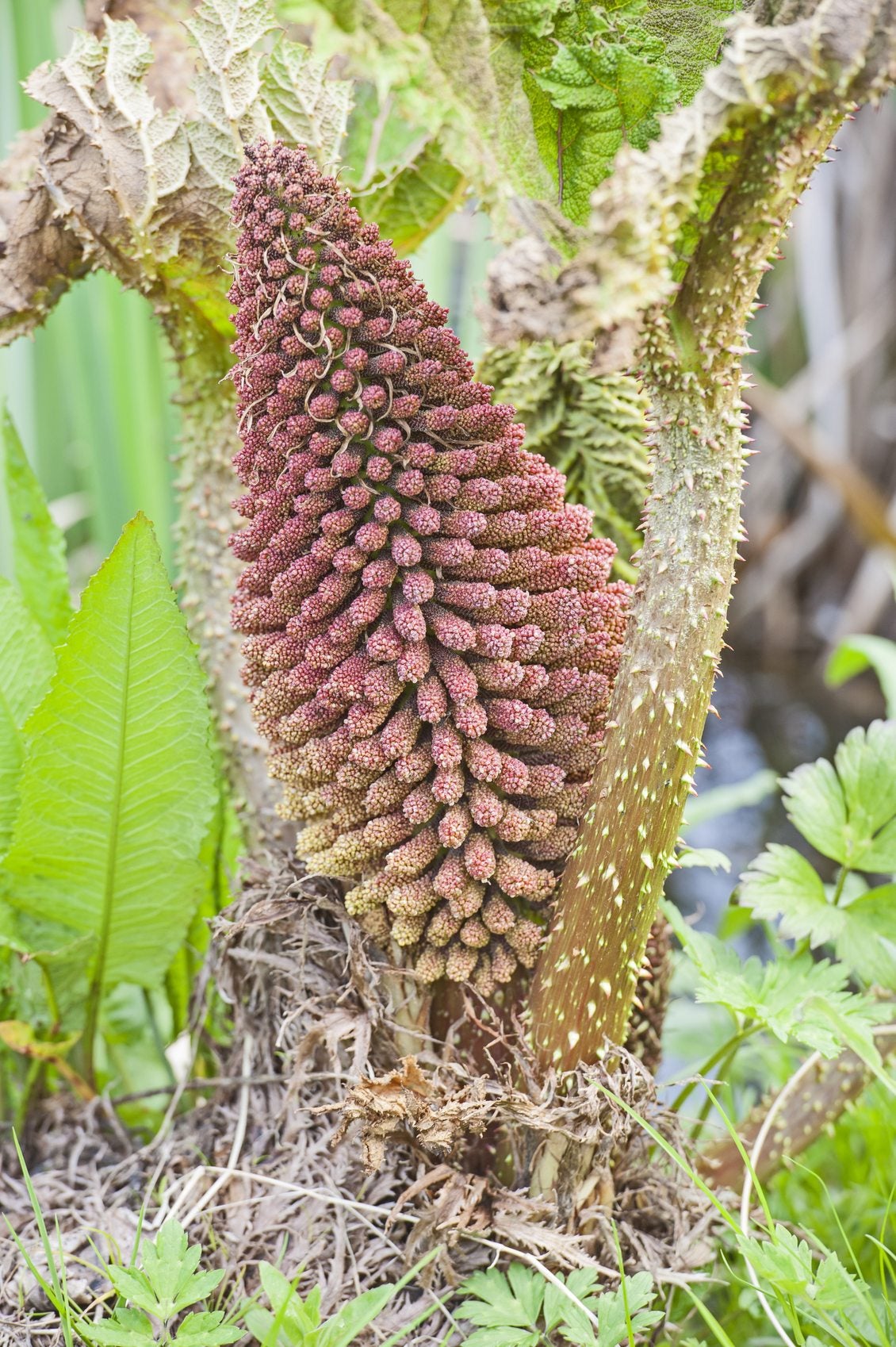Learn About Gunnera Care: Tips For Growing Gunnera Plants

If you're looking to make a statement in your yard and have some low-lying ground to plant, the Gunnera is a great choice for visual impact. Let's learn more about how to grow Gunnera plants.
Gunnera Plant Information
Sometimes called Dinosaur Food (Gunnera manicata), the Gunnera's deeply-lobed leaves can get up to 4 feet (1+ m.) across, and the plant can stand up to 8 feet (2+ m.) tall. Gunnera tinctoria, also known as prickly rhubarb, is similar and just as big. Both of these prehistoric-looking greenery plants will fill in large empty spaces in the corners and edges of your yard, and will thrive in boggy ground where other plants' roots might drown.
Growing and Caring for Gunnera
The most difficult part about caring for Gunnera is its moisture requirements. If you have a piece of ground that is constantly saturated from deck run-off or some low ground at the bottom of a hill, you've found the ideal place for growing Gunnera plants. Gunnera loves moist and boggy ground and must be kept well-watered at all times. Set a sprinkler next to the plant and let it go for an hour or so, as the leaves love moisture as much as the roots do. Choose your planting spot in low ground that gets full sunlight for at least most of the day. Dig in lots of compost and other organic material when preparing the ground for planting. Give the plant a heavy feeding when you first plant it to give it a good start. It takes a lot of energy to create this much growth, and this makes Gunnera a heavy feeder. In addition to the fertilizer you dig in with the first planting, feed them twice more during the season with a good, all purpose fertilizer. Side dress the plants and water the fertilizer into the soil next to the crown. Many perennial plants can be propagated by dividing, but the Gunnera is so large that this method is hard to use. The best way to increase your Gunnera plot is by cutting out a portion of the crown much like you'd remove a wedge of pie. Do this in April or May before the main growth has begun. Plant this new juvenile plant at least 10 feet (3 m.) away to give both plants room to grow. Gunnera may be tough, but it can be damaged by winter frost. Cut the leaves down around November and pile them on top of the center crown left in the ground. This will insulate the more tender parts of the plant from the cold. Remove the dead leaves early in the spring to allow new growth to spring up.
Gardening tips, videos, info and more delivered right to your inbox!
Sign up for the Gardening Know How newsletter today and receive a free copy of our e-book "How to Grow Delicious Tomatoes".
-
 Looking For Plants To Give You The Soft And Fuzzies? Try These 5 Fuzzy Leaf Plant Options
Looking For Plants To Give You The Soft And Fuzzies? Try These 5 Fuzzy Leaf Plant OptionsLovers of texture, drama, silver foliage and tactile plants will adore these special sensory garden additions. These fuzzy leaf plant options will leave you all aglow
By Susan Albert
-
 Get Ready For A Summer Of Hummers! Grow These Full Sun Hummingbird Plants and Flowers
Get Ready For A Summer Of Hummers! Grow These Full Sun Hummingbird Plants and FlowersIf you’re lucky enough to enjoy a sunny backyard, make sure you are maxing out on your pollinator opportunities and grow these full sun hummingbird plants and flowers
By Tonya Barnett
